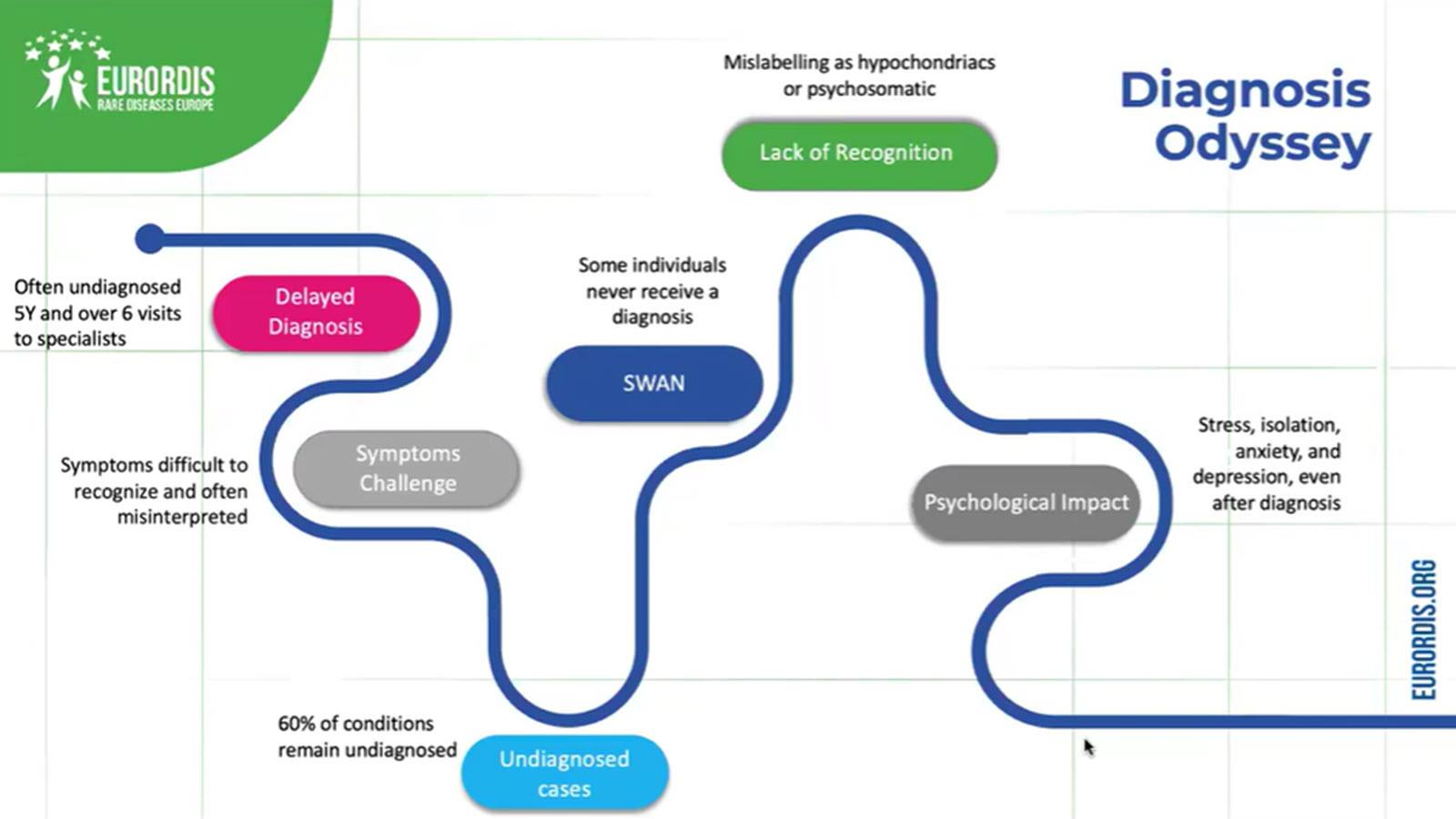The treatment a patient receives depends on their diagnosis – a “linchpin” for someone who’s been experiencing unexplained symptoms. A linchpin means “something that holds the various elements of a complicated structure together,” which is a fitting way to describe a diagnosis.
For undiagnosed patients still waiting for that linchpin, the time-consuming process takes an emotional and psychological toll, experts said during a recent webinar about mental health hosted by EURORDIS-Rare Disease Europe. One word for it is “SWAN,” or “syndrome without a name,” said Concha Mayo, wellness and wellbeing manager for EURORDIS.
Undiagnosed patients may go years, or even decades, visiting doctors, getting tests, doing their own digging and looking for a root cause. One study conducted by an Oregon State University researcher found that people who have rare conditions experience more depression and anxiety than the rest of the population. A University of Cambridge researcher, who’s also a rare disease patient, concurred in a journal article that said 82% of rare disease patients report anxiety. That’s in part, she said, because patients are often misdiagnosed or made to think the problems might be “all in their head.”
Feeling stress and anxiety is not a sign that something is wrong with rare disease patients, said Dr. Gareth Baynam, one of the webinar’s panelists and a clinical geneticist at Western Australia University.
“They are having a normal response to extraordinary stressors,” he said. With consistent support for their wellbeing, patients can come to realize that, said Baynam, who is also Director of the Center for Rare and Undiagnosed Diseases at Western Australia.
About 140 people all over the world attended the live webinar event, which is now available to watch on YouTube: Watch the EURORDIS webinar.
Patients and their families, the panelists said, are overwhelmed by the unknown. Without a diagnosis, “no one understands the disease, so there is no treatment and no prognosis,” said Helene Cederroth, another webinar participant and founder of the Wilhelm Foundation, a nonprofit organization dedicated to diagnosing children who have complex conditions.
For parents without a diagnosis for their child's medical condition, wrote one researcher, “the uncertainty … permeates many aspects of their lives, leaving parents with limited treatment options and an uncertain future.” About 80% of rare diseases are genetic, and have varied symptoms involving care from different specialties such as neurologists, infectious disease specialists or endocrinologists.
Panelists said the rare and undiagnosed should be recognized as a distinct population of patients who have specific unmet needs, including the need for representatives to advocate for further research and psychosocial support. Step 1 should be adequately defining the term “undiagnosed” to better capture the attention of policymakers and stakeholders, Baynam said.
“Until we have a good definition, we can't have clear pathways,” he said. “They say what is that?”
At the center where Baynam cares for patients, all health care providers – nurses, primary care physicians, mental health specialists and other members of the team are aware of the rare and undiagnosed. It took 10 years.
“It is a systems approach, across all sectors, [the term] ‘undiagnosed disease’ is being embedded,” he said. “It is a category insurers are starting to accept.”
When a diagnosis is elusive, some patients are incorrectly characterized as hypochondriacs, which only adds to the distress of having an undiagnosed illness. To continue the conversation on mental health, EURORDIS invited patients to share short videos about the steps they took to improve their emotional health. The videos will be shown at an upcoming conference.
For patients who remain undiagnosed, here are some suggestions:
- Pay attention to symptoms and record them.
- Find the right health care team.
- Learn to present your symptoms factually and clearly.



